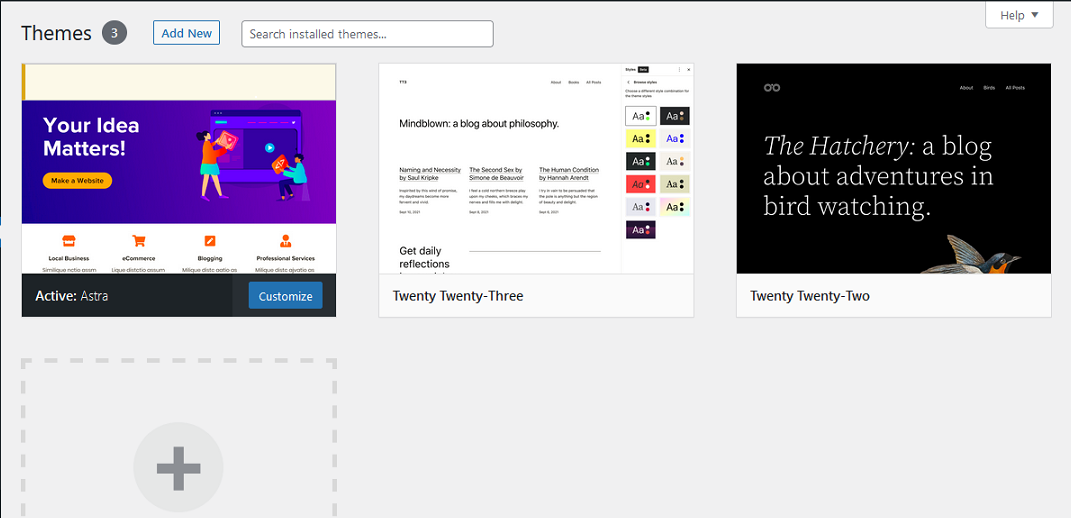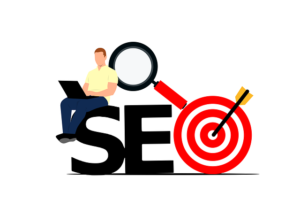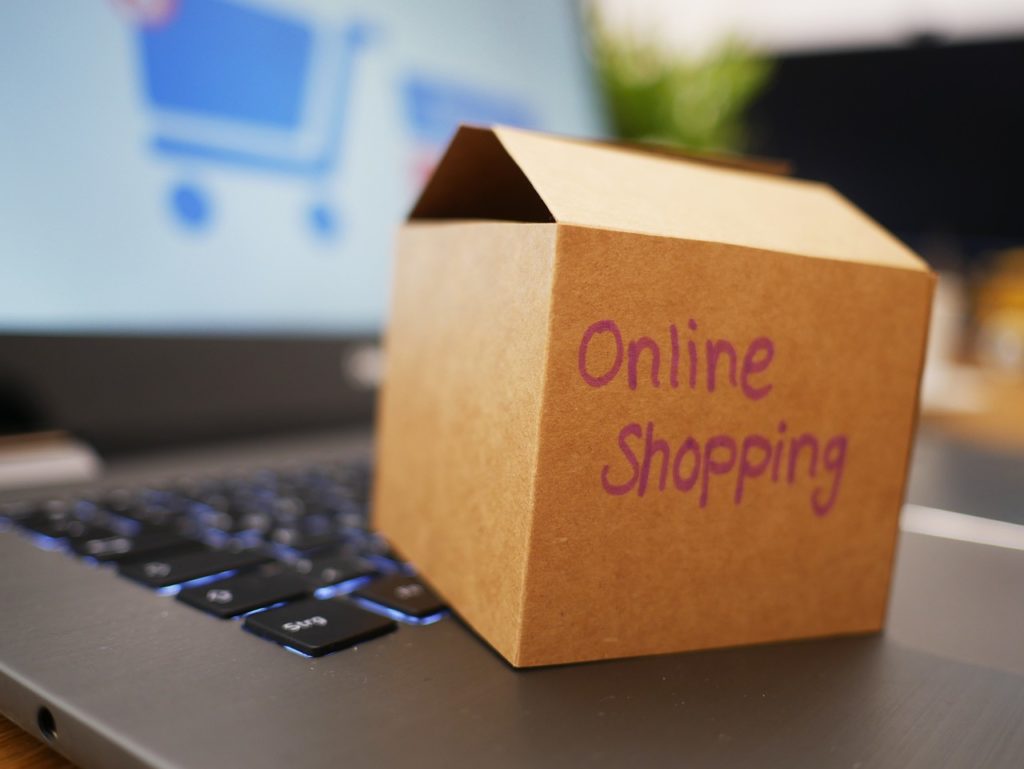Having an e-commerce website is your ticket to reaching customers anytime, anywhere. It’s not just a bonus feature for your business; it’s an essential part of your brand’s identity and growth. If you’re looking to Start a Website, understand that it’s a critical move for establishing a robust online presence.
Choosing a Domain Name and Hosting
 Selecting the right domain name is like choosing the name for your firstborn. Okay, maybe not that dramatic, but it’s still a big deal. Your domain name is your online identity, the label by which the digital world will come to know you. It should be memorable, easy to spell, and relevant to your business. A good domain name can make your brand, while a poor one can break it.
Selecting the right domain name is like choosing the name for your firstborn. Okay, maybe not that dramatic, but it’s still a big deal. Your domain name is your online identity, the label by which the digital world will come to know you. It should be memorable, easy to spell, and relevant to your business. A good domain name can make your brand, while a poor one can break it.
Moving on to the topic of hosting. Web hosting is where your website lives on the internet. It’s like your online real estate. You’re essentially renting space on a server to store your website’s files and data. The type of hosting you choose can have a significant impact on your site’s performance and reliability.
You might be wondering where to get both a domain name and hosting. Well, HostGator is a one-stop shop for both. Why HostGator, you ask? They’ve been in the business for a long time, which means they’ve built a reputation for reliability and excellent customer service.
Why WordPress for E-commerce?

Starting with ease of use, WordPress is incredibly user-friendly. The dashboard is straightforward, making it simple for anyone to get the hang of it. You don’t need to be a tech genius to manage your site.
Flexibility and customization are next on the list of WordPress perks. There are thousands of themes and plugins available. This means you can tailor your site to fit your needs, whether you’re going for a minimalist look or want a site packed with features.
Community support is another standout feature for WordPress. The platform has been around for a long time, amassing a large following of both developers and users. This community contributes to an extensive ecosystem of plugins and themes.
If you ever run into a problem, the chances are high that someone else has faced it, too. Solutions are often readily available online, thanks to this active community. It’s like having a support team available around the clock.
This community-driven approach doesn’t just solve immediate issues. It also helps the platform evolve. WordPress continues to adapt as users’ needs change, making it a sustainable choice for your e-commerce site.
Installing WordPress
Ease into the WordPress world by starting with the installation process. If the thought of installing software makes you break into a cold sweat, don’t worry. HostGator simplifies this with its One-Click Install feature. Seriously, it’s as easy as clicking a button and letting the magic happen behind the scenes.
Once WordPress is installed, you’ll land on the dashboard. This is where you’ll manage everything related to your website. It might look overwhelming at first, but give it some time. You’ll soon find your way around, customizing settings and tweaking designs to your heart’s content.
Speaking of customization, this is where you can really make your site your own. WordPress offers a range of settings right out of the box. You can adjust site titles, taglines, and even the format of your URLs. These initial settings are crucial because they lay the foundation for your site’s identity.
HostGator makes the installation process a breeze and offers robust support for the initial setup. If you find yourself stuck at any point, their customer service is just a click away. They’ve got a wealth of resources to help you navigate any challenges you might encounter.
Selecting a Theme

Choosing the right theme is essential for setting the tone of your online store. It’s all about alignment with your brand’s personality and goals. You want a theme that looks good and offers functionality tailored to your specific needs. Whether you’re selling handmade crafts or high-tech gadgets, a theme out there is a perfect fit for your brand.
You might be curious about how to actually go about selecting a theme. WordPress makes this easy with its theme repository, accessible right from your dashboard. You can filter themes based on features, layout, and even specific industries. Take your time to browse, preview, and consider how each theme might look with your products and branding.
Installing your chosen theme is as simple as clicking “Install” and then “Activate.” Just like that, your theme is live. But the fun doesn’t stop there. Most themes come with customization options that allow you to tweak various elements like colors, fonts, and layouts.
Customization is your playground for creativity. Want a different color scheme? No problem. Need to adjust the font size for better readability? You got it. These adjustments are usually made through the theme customizer, which provides a live preview as you make changes. This way, you can see how each tweak impacts the overall look before making it final.
Picking the Right Ecommerce Plugin
Regarding e-commerce on WordPress, WooCommerce is often the first name that pops up. But it’s not the only option. Plugins like Easy Digital Downloads, WP eCommerce, and BigCommerce also offer robust features.
WooCommerce is popular for a reason: it’s user-friendly and highly extendable. However, other plugins like WP eCommerce and BigCommerce have their own unique features that might be more aligned with your specific needs. For instance, Easy Digital Downloads is excellent if you sell digital products like ebooks or music.
Choosing the right plugin is a matter of understanding your needs and what each plugin offers. Take some time to read reviews, check out their features, and even test a few if possible. This will give you a clearer picture of what will work best for your online store.
Once you’ve made your choice, installing the plugin is usually a straightforward process. Head over to the ‘Plugins’ section in your WordPress dashboard, click ‘Add New’, and search for your chosen plugin. After that, it’s just a matter of clicking ‘Install Now’ and then ‘Activate’. Your ecommerce plugin is ready to go!
After activation, most plugins will guide you through an initial setup process. This is where you’ll configure essential settings like payment methods, shipping options, and tax rates. Don’t skip this step; it’s crucial for the smooth operation of your online store.
Setting Up Your Online Store

The first step in setting up your online store involves creating essential pages. Think of these as the backbone of your store: the homepage, product pages, and the checkout process. WordPress offers a range of user-friendly tools to help you get these pages up and running in no time.
After your pages are set, you’ll want to focus on the locale and currency settings. This is more than just a formality; it’s about making sure your store meets your target audience’s expectations. Different countries have their own tax laws and preferred currencies, and getting this right is crucial for a seamless shopping experience.
Then comes the often-overlooked aspect of sales tax. The tax calculations can get a bit complicated if you’re selling products across different states or countries. But don’t worry; WordPress plugins are designed to handle this, calculating the correct tax based on your customer’s location.
Another key consideration is payment methods. Offering a variety of payment options can make a world of difference. While credit cards are pretty much a given, alternative methods like PayPal or Apple Pay can offer that extra convenience your customers might be looking for.
Adding Products to Your Store
The meat and potatoes of any online store are the products you’re selling. Adding them to your WordPress site is a straightforward process. You’ll usually find a section in your dashboard specifically for this, often labeled ‘Products’ or something similar. Here, you can input all the essential details like product name, price, and SKU (Stock Keeping Unit).
But it’s not just about listing a name and a price. The way you present your products can make or break your sales. Good product descriptions are essential. They should be clear concise, and provide the information a potential customer might seek. Think of it as your chance to pitch your product to the customer.
Images are another crucial element. They give customers a visual idea of what they’re buying. High-quality images from multiple angles can significantly enhance the product’s appeal. Some stores even include a short video to show the product in action, which can be a great way to stand out from the competition.
Extending Your Store’s Capabilities
Your online store is up and running, but there’s always room for improvement. Plugins are one of the best ways to enhance your store’s functionality. Think of plugins as the special sauce that can make your store go from good to great.

SEO, or Search Engine Optimization, should be on your radar from day one. Plugins like Yoast SEO or All in One SEO Pack can help you optimize your product descriptions, meta descriptions, and even generate sitemaps. These plugins guide you through the SEO maze, ensuring your store ranks well on search engines.
Backup is another area you can’t afford to ignore. Imagine losing all your product listings or customer data. Nightmare, right? Plugins like UpdraftPlus or BackupBuddy can automate this task for you. They create regular backups of your store data so you can restore it in case of any mishaps.
Security is another cornerstone. You’re handling customer data, after all. Plugins like Wordfence or Sucuri Security offer a range of features to protect your online store from malware, brute force attacks, and other potential threats.
Conclusion
Combining HostGator and WordPress is a stellar choice for anyone looking to build an eCommerce site. While the setup is generally smooth, encountering a minor obstacle or two is completely normal. Should you find yourself in a bind, a wealth of WordPress communities are ready to lend a helping hand. How to Make an ecommerce Website in WordPress becomes a lot less intimidating with such a supportive network.
